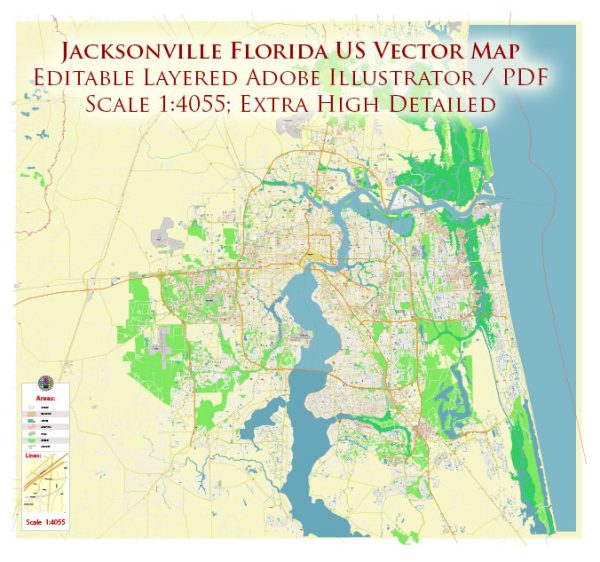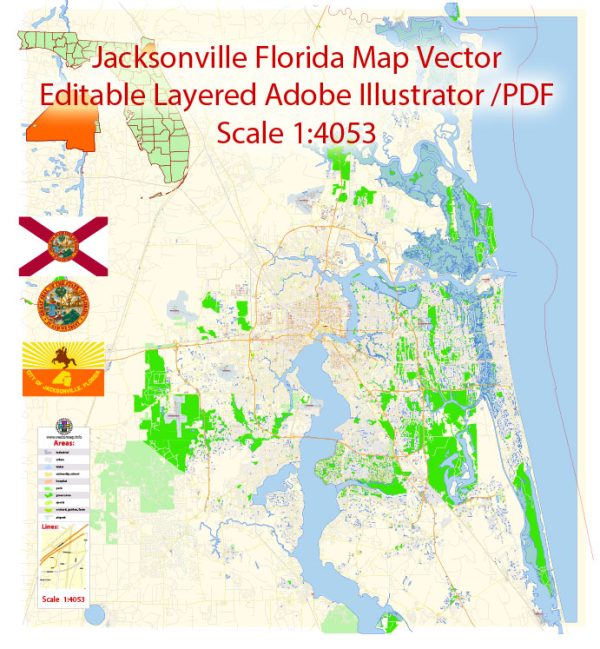Jacksonville, Florida, has a rich history of urban development that reflects the broader trends in American urbanization. Here’s a brief overview of key points in the city’s urban development:
- Early Settlement and Growth (19th Century):
- Jacksonville was established in 1791 and incorporated in 1832. Its location along the St. Johns River made it a strategic point for trade and commerce.
- The city experienced significant growth in the 19th century, particularly after the Civil War when it became a major transportation hub for shipping and railways.
- The Great Fire of 1901:
- In 1901, a devastating fire swept through Jacksonville, destroying much of the city. This event led to a major rebuilding effort and the introduction of new building codes and materials.
- Port City and Military Importance (20th Century):
- During World War II, Jacksonville played a crucial role as a military transportation hub, leading to further economic growth.
- The development of the Port of Jacksonville in the mid-20th century solidified the city’s status as a major port.
- Civil Rights Movement:
- Like many other cities in the South, Jacksonville was a site of significant civil rights activism during the 1960s. The struggle for desegregation and equal rights left a lasting impact on the city’s social and political landscape.
- Consolidation of City and County Government (1968):
- In 1968, Jacksonville merged its city and county governments, creating the largest city in land area in the contiguous United States. This move aimed to streamline services and improve efficiency.
- Downtown Redevelopment:
- In recent decades, Jacksonville has focused on revitalizing its downtown area. Projects such as the River City Renaissance plan have aimed to attract businesses, residents, and tourists to the urban core.
- Economic Diversification:
- Jacksonville has diversified its economy beyond traditional sectors like shipping and military. The city has attracted industries such as finance, healthcare, and technology, contributing to its economic growth.
- Population Growth and Suburban Expansion:
- Jacksonville has experienced significant population growth, leading to suburban expansion. The development of planned communities and the improvement of transportation infrastructure have played roles in this suburban growth.
- Cultural and Recreational Development:
- The city has invested in cultural and recreational amenities, including museums, parks, and entertainment venues, to enhance the quality of life for residents and attract visitors.
- Challenges and Opportunities:
- Like many growing cities, Jacksonville faces challenges such as traffic congestion, infrastructure demands, and managing growth while preserving natural resources. Balancing development with environmental sustainability is an ongoing concern.
In summary, Jacksonville’s urban development has been shaped by its strategic location, economic activities, historical events, and efforts to adapt to changing circumstances. The city continues to evolve, seeking to balance growth with the preservation of its unique cultural and natural assets.



 Author: Kirill Shrayber, Ph.D.
Author: Kirill Shrayber, Ph.D.